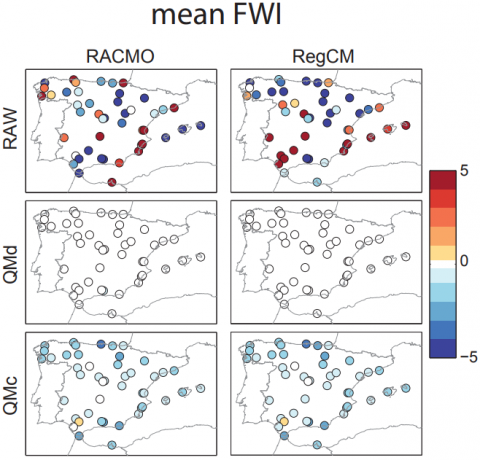Predictia has contributed to a recently published paper in the journal Climatic Change, entitled Direct and component-wise bias correction of multi-variate climate indices: the percentile adjustment function diagnostic tool.
Climate impact and vulnerability studies are frequently based on multi-variate climate indices (CIs) combining two or more essential climate variables (ECVs). In many occasions, bias correction (BC) of these indices is required in order to obtain a realistic representation of the index magnitude, particularly when dealing with absolute threshold-based indicators. This poses the question of whether the BC method modifies the inter-variable dependencies and eventually the climate change signal, a topic insufficiently addressed so far in the literature.
The direct bias correction of the multi-variate CI stands as a usual alternative, since it preserves the physical and temporal coherence among the primary variables as represented in the dynamical model output, at the expense of incorporating the individual biases on the CI with an effect difficult to foresee, particularly in the case of complex CIs bearing in their formulation non-linear relationships between components. Such is the case of the Fire Weather Index, used as reference CI in this study to ascertain the main advantages and shortcomings of direct BC of FWI w.r.t. correcting its different input ECVs separately. Predictia has developed several products and projects dealing with this climate index (see an example), widely used in different parts of the world for the characterization of the forest fire danger potential given the meteorological conditions. The implications that both approaches have for preserving the original model’s climate change signal is addressed, and a new graphical tool for the assessment of the the quantile mapping procedure is introduced (the Percentile Adjustment Function).

